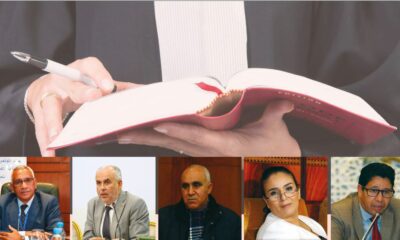Business
African Stock Exchanges Struggle with Interconnection
Launched in 2022 with seven of the continent’s stock exchanges, the project to interconnect African stock exchanges is still at an early stage in terms of transactions, as long as the harmonization of rules and procedures is not optimal.

In the Pan-African agenda for the economic integration of states, several ambitious initiatives have been implemented in recent years, including the AfCFTA, the African Continental Free Trade Area, and the Pan-African Payment and Settlement System (PAPSS).
In the capital market, a project to connect African stock exchanges, known as the African Exchanges Linkage Project (AELP), was launched in 2022, initiated by the African Stock Exchanges Association (ASEA) and the African Development Bank.
Deemed crucial to facilitate cross-border investments on the continent and support the rollout of the AfCFTA, the project to interconnect African stock exchanges was officially launched on November 18, 2022, with the introduction of the AELP Link trading platform, a technological solution aimed at supporting market integration, order routing system, and market data and order book sharing.
In its initial phase, the AELP connected seven stock exchanges, among the largest in Africa, covering fourteen African countries: Morocco, Egypt, Nigeria, Kenya, Mauritius, South Africa, and the West African Economic and Monetary Union (WAEMU) countries (Benin, Burkina Faso, Ivory Coast, Guinea-Bissau, Mali, Niger, Senegal, and Togo).
Thirty brokers, including five from Morocco, have connected to the platform to conduct the initial transactions. Subsequently, other stock exchanges on the continent have joined the project, such as Ghana and Botswana.
In the first phase of the AELP project deployment, transactions operate under a sponsored access mechanism.
Essentially, this system allows a broker to access another foreign market by using a local broker. This enables an investor based in Casablanca to access the order book of the Nairobi Stock Exchange and vice versa, through the AELP Link interface, or to access the order books of Mauritius or Johannesburg.
In a second phase, the AELP project plans to harmonize the rules governing the approval of participants so that they can trade on all African stock exchanges. And therein lies the rub, for this crucial measure, which should enable a broker to trade on any of the platform’s member exchanges, without going through a local broker, presupposes harmonized rules.
Current transactions are modest
At present, it must be said that “transaction volumes remain very modest,” as highlighted by a market operator. The focus has indeed been initially on the technical setup of the platform, the integration of different systems, and familiarizing brokers with the new tool.
Acknowledging the scale of the challenge, the project initiators emphasize that the AELP project is a long-term endeavor, and transactions are expected to increase gradually as new brokers and stock exchanges join the platform, and as investors become aware of the opportunities available.
As already mentioned, this presupposes not only harmonization of rules, but also integration of IT systems, to enable interoperability between the different trading platforms of the participating stock exchanges. For the time being, this is far from being the case, as African stock exchanges have different regulations, listing practices and clearing and settlement procedures.
Rules to harmonize
Several challenges indeed confront regulators for cross-border stock transactions to take off. As highlighted by this professional, there is first a “clearing issue” that needs to be addressed.
In a cross-border context like that of the AELP, the clearing process, which follows the execution of a stock transaction and aims to ensure the proper settlement of operations, becomes more complex due to differences between systems and regulations in different countries.
As a result, each participating stock exchange has its own clearing and settlement system, with distinct technological infrastructures and procedures.There is also the “custodian issue”. At present, each stock exchange operates with its own custodian. Settlement takes place in the country, with the local custodian, where the transaction is carried out in the local currency.
One of the main challenges is the harmonization of regulations and practices among the different participating countries. This includes harmonizing trading hours, currencies used, listing rules, and disclosure requirements.
However, each market has its own standards, complicating the necessary standardization to facilitate cross-border transactions. The ideal scenario would be to favor using a single broker and a single custodian for African assets.
This process will take time to implement, according to the project initiators themselves. Other major challenges confront custodians, who must navigate a complex and disparate regulatory framework. Among these challenges, in addition to integrating information systems and harmonizing rules and procedures, is strengthening security measures to protect investor data and assets.
Custodians must also develop strategies to manage risks associated with cross-border transactions, especially concerning market volatility and currency fluctuations.
In short, although there is political will to move things forward, it will not be tomorrow that the AELP project will transform into an African Euronext. Patience will be required before seeing this project fully play its role as a catalyst for intra-African financing and witnessing, for example, an IPO launched across the entire continent simultaneously.
Expected Impact
On paper, the AELP project is highly appealing. It aims to create a more integrated, liquid, and attractive African financial market, which should benefit investors, companies, and the overall African economies.
The anticipated outcomes of this project are numerous. They focus on improving long-term financing for African economies by enabling companies to raise funds on a continental scale. This would reduce reliance on international financial markets, which are often costly.
The expected benefits include increasing market liquidity by consolidating orders from multiple stock exchanges. It should also allow investors to diversify their portfolios by accessing a wider range of assets.
Overall, the project aims to connect African capital markets to the international financial sphere. By creating a more integrated and liquid market, the AELP seeks to attract international investors and strengthen the position of African stock exchanges on the global stage.













